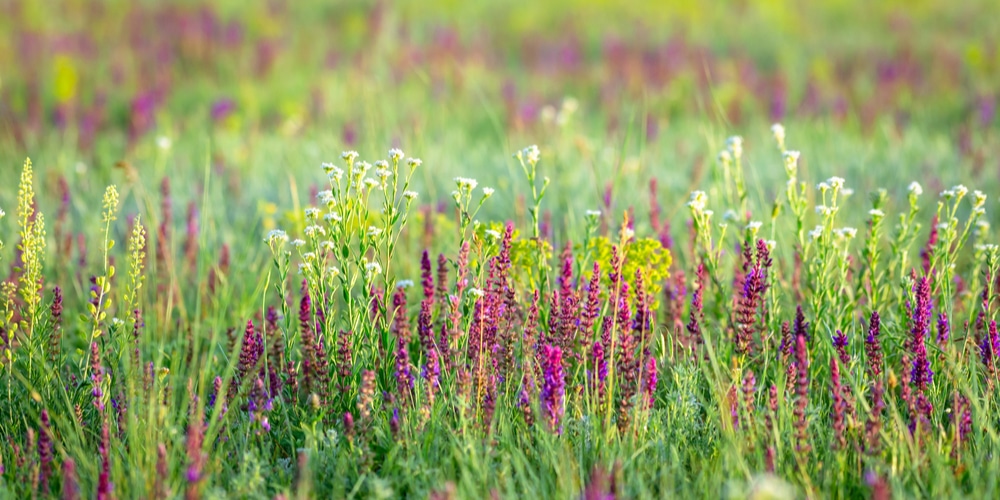A verdant lawn, a sanctuary of tranquility and relaxation, can be marred by the unwelcome presence of sage grass. This invasive perennial, notorious for its resilience and tenacious roots, can quickly transform a pristine expanse into an unkempt and unsightly patch. While some gardeners may resort to chemical herbicides, a more sustainable and effective solution lies in the judicious application of fertilizer. Join us as we delve into the secrets of fertilizing for sage grass eradication, empowering you with the knowledge and tools to reclaim your lawn’s pristine beauty.

Image: www.gfloutdoors.com
Understanding Sage Grass and Its Challenges
Sage grass, an aggressive weed native to Eurasia, has become a common nuisance in many regions of the world. Its adaptability to a wide range of soil conditions and ability to tolerate drought make it a formidable adversary. Moreover, sage grass employs a cunning strategy of allelopathy, releasing chemicals into the soil that inhibit the growth of other plants, giving it a competitive edge over native species.
The deep-seated, fibrous root system of sage grass makes it particularly challenging to eradicate. Traditional methods such as pulling or mowing can prove ineffective, as even the smallest fragment of root can regenerate a new plant. Therefore, a comprehensive approach that targets both above- and below-ground growth is necessary for long-lasting results.
Fertilization: A Natural Ally in the Battle Against Sage Grass
Fertilization, often overlooked as a weed control strategy, plays a pivotal role in weakening and eventually eradicating sage grass. By providing targeted nourishment to desirable turfgrass, you can create a competitive environment that suppresses the invasive weed’s growth and survival.
A well-fertilized lawn boasts dense, healthy grass that forms a barrier against weed encroachment. The thick root systems of thriving turfgrass absorb water and nutrients more efficiently, effectively monopolizing these essential resources and starving sage grass of the sustenance it needs. Furthermore, a healthy lawn naturally produces allelopathic compounds that inhibit the germination and growth of invasive species.
Choosing the Right Fertilizer and Timing Applications
Selecting the appropriate fertilizer and timing the applications strategically are crucial for maximizing effectiveness. A balanced fertilizer with a ratio of nitrogen, phosphorus, and potassium (NPK) of approximately 3:1:2 is recommended for lawn fertilization. Nitrogen promotes turfgrass growth, while phosphorus and potassium strengthen the roots and enhance drought tolerance.
Fertilizing should be done in the spring and fall when turfgrass is actively growing. Avoid over-fertilizing, as excessive nitrogen can lead to rapid growth and weaken the grass’s resistance to disease and pests. Follow the manufacturer’s instructions and apply the fertilizer evenly to ensure consistent coverage.

Image: www.pinterest.com
Expert Insights and Actionable Tips
“Fertilizing is a vital component of an integrated weed management program,” says Dr. Sarah Washington, a renowned turfgrass specialist at the University of California, Davis. “By promoting a robust lawn, you create a natural defense against invasive species like sage grass.”
Here are some additional tips for maximizing the efficacy of your fertilization strategy:
- Water thoroughly after fertilizing: Adequate moisture helps dissolve the fertilizer granules and ensure absorption by the grass roots.
- Mow regularly at the appropriate height: Mowing encourages lateral growth, promoting a thicker turf that further inhibits weed encroachment.
- Consider spot spraying: For isolated patches of sage grass, spot spraying with a selective herbicide labeled for turfgrass can be an effective control measure.
- Be patient and persistent: Sage grass eradication requires time and consistency. Regular fertilization and cultural practices will gradually weaken the weed’s hold over your lawn.
How To Fertilize To Get Rid Of Sage Grass
Conclusion: Reclaiming Your Lawn’s Pristine Beauty
By embracing the power of fertilization and implementing a comprehensive approach, you can wage a successful battle against sage grass and restore your lawn’s pristine beauty. Fertilizing provides a safe and effective means of weakening the invasive weed, paving the way for the re-establishment of a vibrant and healthy turfgrass ecosystem. Remember to consult reliable gardening resources, seek expert advice when necessary, and exercise patience for lasting results. With dedication and proper lawn care practices, you can conquer sage grass and enjoy a weed-free lawn that is a source of pride and rejuvenation.